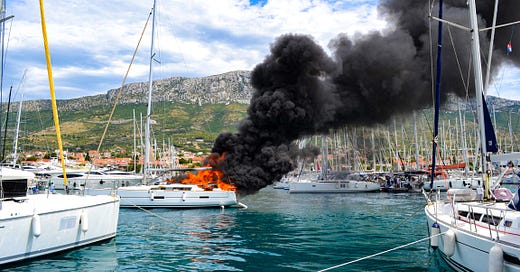Accident Investigator Cites Lithium Liabilities
Barriers to Safe LI Battery Installation Too Great Even for Most Sea-Going Technophiles
Jonathan Klopman is a NAMS Certified Marine Surveyor with an office in Marblehead, Massachusetts. His practice is almost entirely dedicated to accident investigation. This essay, which originally appeared in the April-May 2022 issue of Professional BoatBuilder magazine, is reprinted with permission from the author.
By Jonathan Klopman
Lithium-ion batterie…
Keep reading with a 7-day free trial
Subscribe to LOOSE CANNON to keep reading this post and get 7 days of free access to the full post archives.


